I have the following structure:
public class Message
{
...
public MessageType MessageType { get; set; }
public ICollection<Product> Products { get; set; }
public ICollection<Product> ProductsWhereThisIsDefaultCompletedSale { get; set; }
}
public class Product
{
...
public Guid? DefaultCompletedSaleMessageId { get; set; }
public Message DefaultCompletedSaleMessage { get; set; }
public ICollection<Message> Messages { get; set; }
}
public MessageType {...}
And the mapper:
EntityTypeBuilder<Product> entityBuilder;
entityBuilder
.HasMany(p => p.Messages)
.WithMany(m => m.Products);
entityBuilder
.HasOne(p => p.DefaultCompletedSaleMessage)
.WithMany(m => m.ProductsWhereThisIsDefaultCompletedSale)
.OnDelete(Microsoft.EntityFrameworkCore.DeleteBehavior.NoAction);
And this is working nicely with the database (at least I think so...). When I add a new product to the Messages collection it's added to the ProductsMessages relationships' table. The records are loaded when I eager load them (Include(...)).
The problem is, I'm trying to get all navigation properties to auto include them on certain specific scenarios. But that's not working properly. When I run entityType.GetNavigations() (doc) on Message it doesn't return Products, it only returns the other two navigation properties, ProductsWhereThisIsDefaultCompletedSale and MessageType:
Any ideas on what am I doing incorrectly?
Please let me know if you need more information. I'm on .NET5. Thanks!
